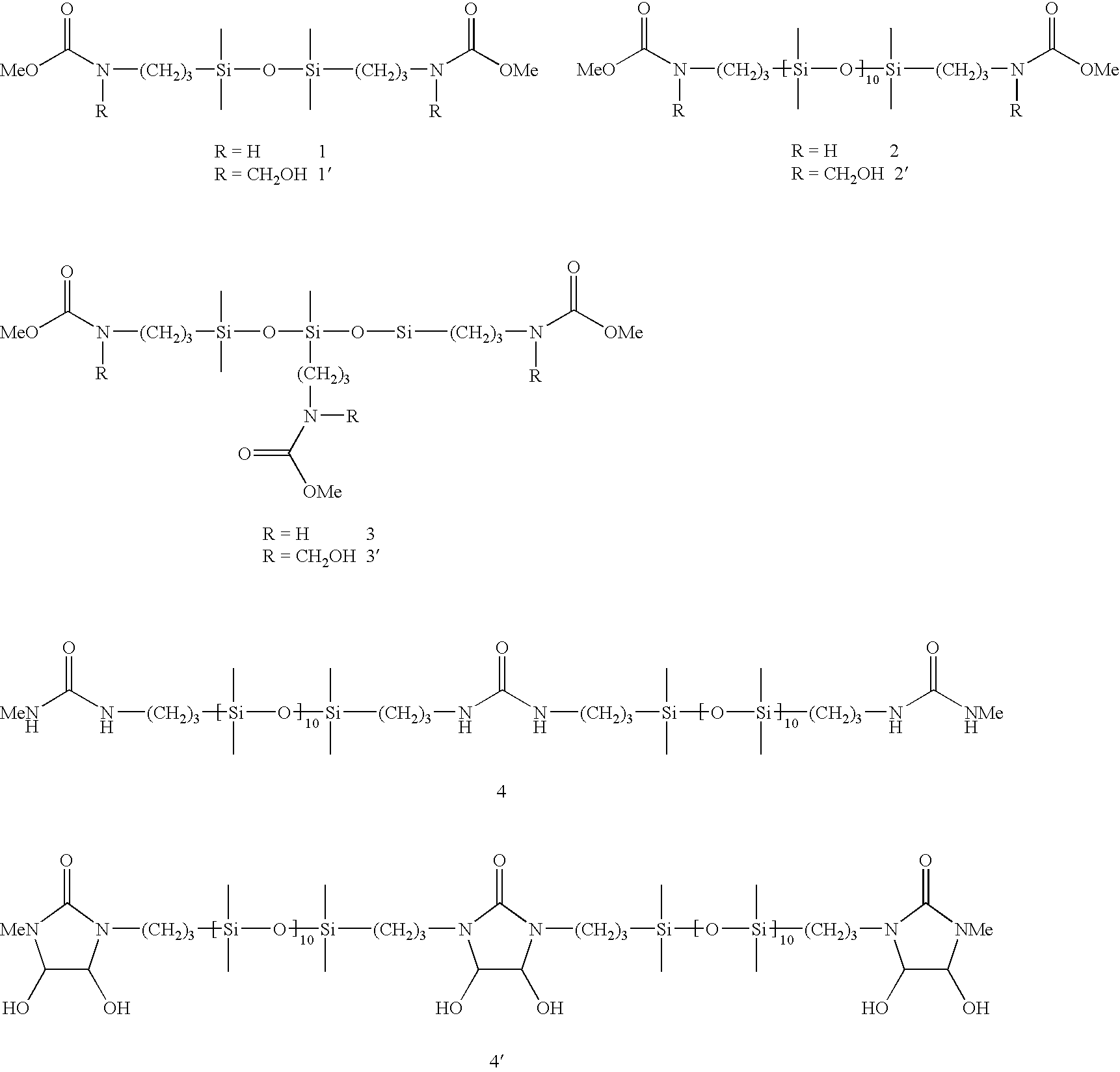Siloxanes containing methylol groups
a technology of methylol groups and siloxanes, applied in the field of methylolated organofunctional siloxanes, can solve the problems of poor permanence on the particular treated substrate, poor coating effect, adverse effects on processing properties of polymers thus obtained, etc., and achieve excellent stability on many substrates, easy synthesizing, and excellent stability
- Summary
- Abstract
- Description
- Claims
- Application Information
AI Technical Summary
Benefits of technology
Problems solved by technology
Method used
Image
Examples
example 1
[0078]A 250 mL round-bottom flask is charged with 50.0 g (147 mmol) of the bis(methylcarbamato)disiloxane 1 and 25.2 g (302 mmol) of 36% by weight aqueous formaldehyde solution at room temperature. The reaction mixture is stirred at 90° C. for 5 h. The product 1′ obtained in the form of an aqueous solution having a content of 57.7 g (144 mmol, 98%) is stable in storage at room temperature for several weeks.
example 2
[0079]Example 1 is repeated by suspending 100 g (78.9 mmol) of the bis(methylcarbamato)oligosiloxane 2, 20 mL of methanol and 13.3 g (160 mmol) of 36% by weight aqueous formaldehyde solution at room temperature. The reaction mixture is stirred at 100° C. for 8 h. Product 2′ is obtained as an organic-aqueous solution which is stable in storage for several weeks and has a content of 97.5 g (73.4 mmol, 93%).
example 3
[0080]Example 1 is repeated by initially charging 60.0 g (119 mmol) of the tri(methylcarbamato)trisiloxane 3 and 16.7 g (200 mmol) of 36% by weight aqueous formaldehyde solution at room temperature. The reaction mixture is stirred at 90° C. for 6 h. Product 3′ is obtained as an aqueous solution which has a content of 63.6 g (107 mmol, 90%) and is stable in storage at room temperature for several weeks.
PUM
| Property | Measurement | Unit |
|---|---|---|
| boiling point | aaaaa | aaaaa |
| temperatures | aaaaa | aaaaa |
| pressures | aaaaa | aaaaa |
Abstract
Description
Claims
Application Information
 Login to View More
Login to View More - R&D
- Intellectual Property
- Life Sciences
- Materials
- Tech Scout
- Unparalleled Data Quality
- Higher Quality Content
- 60% Fewer Hallucinations
Browse by: Latest US Patents, China's latest patents, Technical Efficacy Thesaurus, Application Domain, Technology Topic, Popular Technical Reports.
© 2025 PatSnap. All rights reserved.Legal|Privacy policy|Modern Slavery Act Transparency Statement|Sitemap|About US| Contact US: help@patsnap.com

